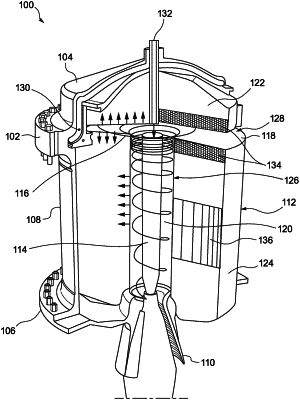| CPC F02K 9/72 (2013.01) [C06B 23/00 (2013.01); F02K 9/28 (2013.01); F02K 9/42 (2013.01); F23C 3/006 (2013.01)] | 20 Claims |

|
1. A vortex hybrid motor, comprising:
a housing having a proximal end, a distal end, and a sidewall extending between the proximal end and the distal end;
a combustion zone comprising a space within the housing configured to receive an oxidizer, the combustion zone comprising an upper zone and a central zone; and
a fuel core positioned within the housing and configured to react with the oxidizer to thereby create a thrust sufficient to propel at least the vortex hybrid motor, the fuel core defining at least a part of the combustion zone, the fuel core comprising a proximal part and a distal part, the proximal part of the fuel core extending completely and continuously between a proximal surface area of the proximal part and a proximal inner wall of the proximal end of the housing, the proximal surface area defining a proximal end of the upper zone of the combustion zone, the distal part of the fuel core comprising a first distal surface area and a second distal surface area, the first distal surface area defining a distal end of the upper zone, the first distal surface area being separated from the proximal surface area to form the upper zone of the combustion zone, the second distal surface area of the distal part of the fuel core extending completely and continuously between the first distal surface area and a distal end of the distal part of the fuel core, the second distal surface area forming a cylindrical chamber defining the central zone of the combustion zone.
|